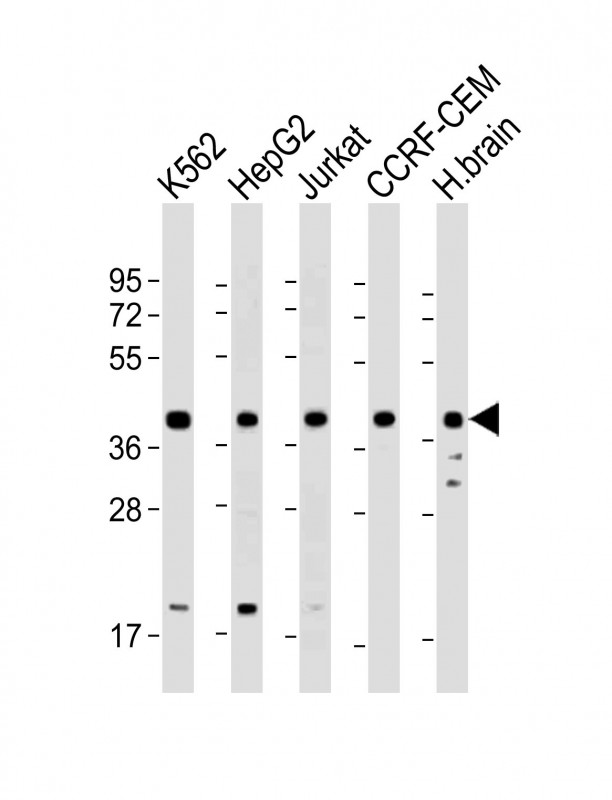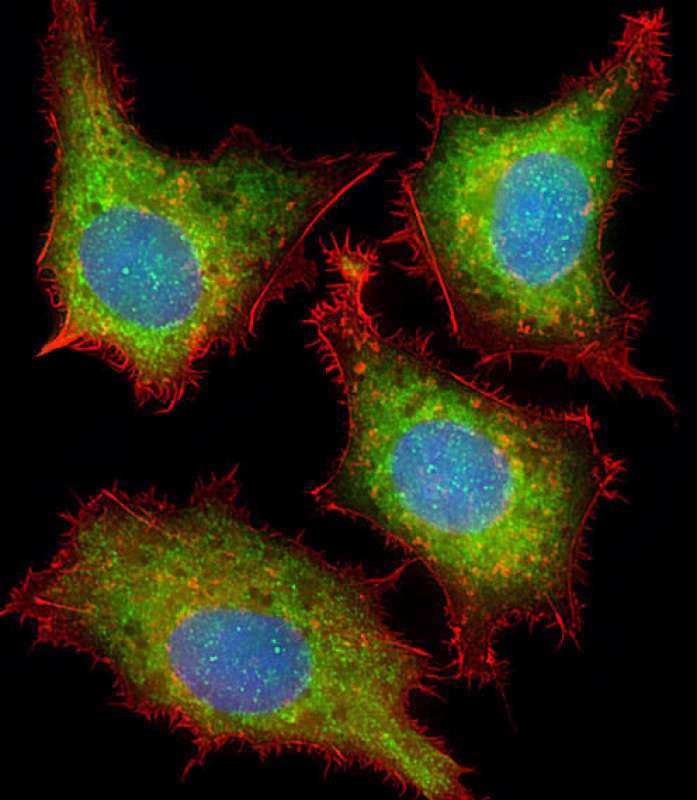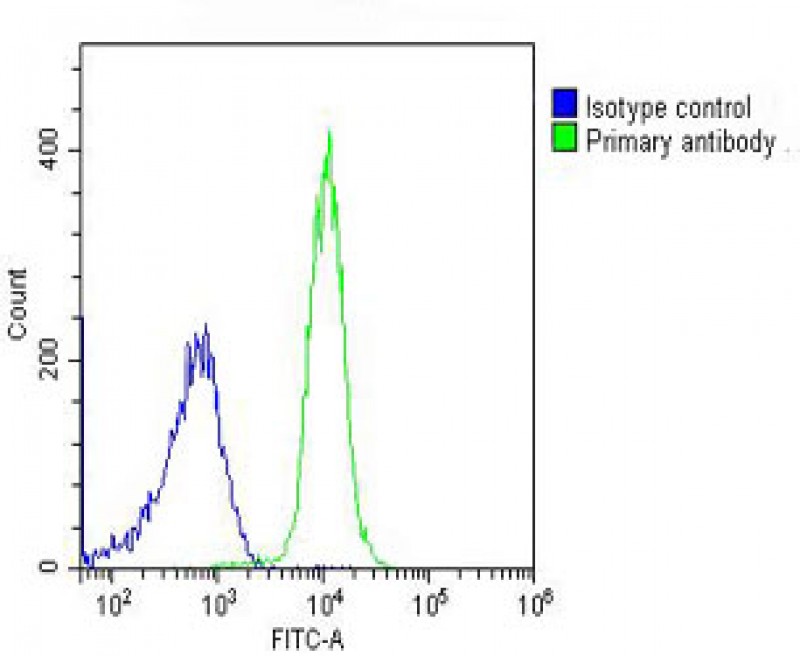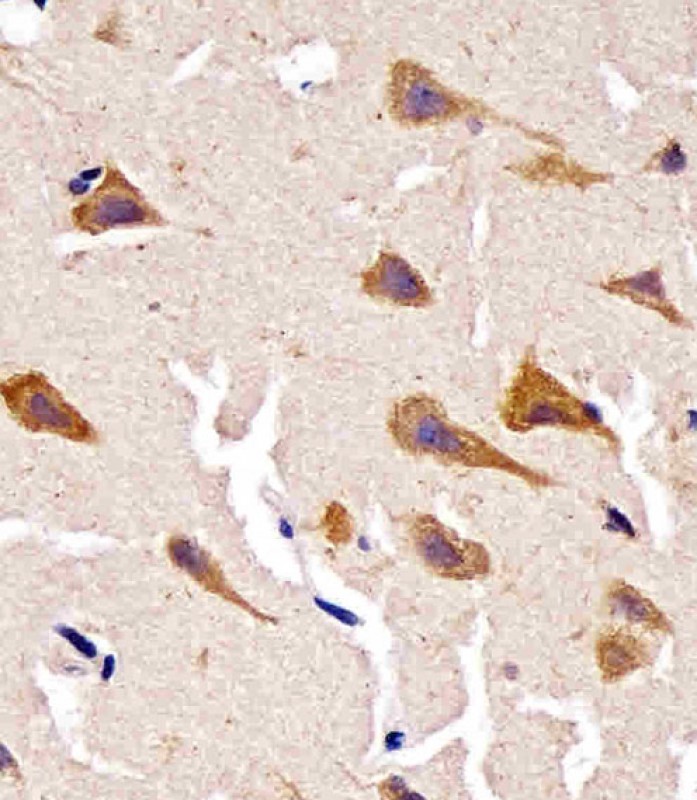



| WB | 1/2000 | Human,Mouse,Rat |
| IF | 咨询技术 | Human,Mouse,Rat |
| IHC | 1/100-1/500 | Human,Mouse,Rat |
| ICC | 1/25 | Human,Mouse,Rat |
| FCM | 1/25 | Human,Mouse,Rat |
| Elisa | 咨询技术 | Human,Mouse,Rat |
| Aliases | Peptidyl-prolyl cis-trans isomerase D, PPIase D, 5.2.1.8, 40 kDa peptidyl-prolyl cis-trans isomerase, Cyclophilin-40, CYP-40, Cyclophilin-related protein, Rotamase D, PPID, CYP40, CYPD |
| Entrez GeneID | 5481 |
| WB Predicted band size | 40.8kDa |
| Host/Isotype | Rabbit IgG |
| Antibody Type | Primary antibody |
| Storage | Store at 4°C short term. Aliquot and store at -20°C long term. Avoid freeze/thaw cycles. |
| Species Reactivity | Human |
| Immunogen | This Cyclophilin D antibody is generated from a rabbit immunized with a KLH conjugated synthetic peptide between 336-370 amino acids from the human region of human Cyclophilin D. |
+ +
1. **"Cyclophilin D-dependent mitochondrial permeability transition regulates some necrotic but not apoptotic cell death"**
- **作者**: Baines CP et al.
- **摘要**: 该研究通过基因敲除实验证明,Cyclophilin D(CypD)是线粒体通透性转换孔(mPTP)的关键调控因子,使用CypD抗体确认蛋白表达缺失,发现其缺失可抑制缺血再灌注损伤中的坏死性细胞死亡,但对凋亡无显著影响。
2. **"Cyclophilin D is a component of mitochondrial permeability transition and mediates neuronal cell death after focal cerebral ischemia"**
- **作者**: Schinzel AC et al.
- **摘要**: 通过免疫沉淀和Western blot(使用CypD抗体)验证CypD在mPTP复合体中的作用,发现其缺失可减少脑缺血后的神经元死亡,表明CypD是治疗缺血性损伤的潜在靶点。
3. **"Cyclophilin D regulates mitochondrial permeability transition pore opening in a Parkinson’s disease model"**
- **作者**: Nakagawa T et al.
- **摘要**: 研究利用CypD抗体检测帕金森病模型中蛋白表达变化,发现抑制CypD可减少mPTP开放和多巴胺能神经元死亡,提示靶向CypD可能具有神经保护作用。
4. **"The role of Cyclophilin D in modulating oxidative stress-induced calcium overload"**
- **作者**: Halestrap AP et al.
- **摘要**: 通过抗体标记和功能实验,阐明CypD在氧化应激下通过调控mPTP开放加剧细胞内钙超载,其抑制剂(如环孢菌素A)可减轻相关病理损伤。
Cyclophilin D (CypD), encoded by the *PPIF* gene, is a mitochondrial matrix protein belonging to the immunophilin family. It acts as a peptidyl-prolyl isomerase, facilitating protein folding and modulating mitochondrial permeability transition pore (mPTP) opening—a critical event in apoptosis, necrosis, and ischemia-reperfusion injury. CypD’s interaction with the mPTP complex regulates calcium homeostasis, oxidative stress responses, and cell death pathways, making it a key player in neurodegenerative diseases, cardiovascular disorders, and cancer.
Antibodies targeting CypD are essential tools for studying its expression, localization, and function in cellular and disease models. They are widely used in techniques like Western blotting, immunohistochemistry, and immunofluorescence to assess CypD levels in tissues or cells under stress, metabolic alterations, or drug treatment. Specificity is crucial, as CypD shares structural homology with other cyclophilin family members. High-quality antibodies help validate CypD’s role in mitochondrial dysfunction and evaluate therapeutic strategies targeting mPTP inhibition (e.g., cyclosporine A). Research using CypD antibodies has advanced understanding of its dual roles in promoting cell death during injury while supporting survival in certain cancers, highlighting its context-dependent therapeutic potential.
×